Can freezing a pair of boots break in leather faster than balsam?
The true shortcut to softening leather.
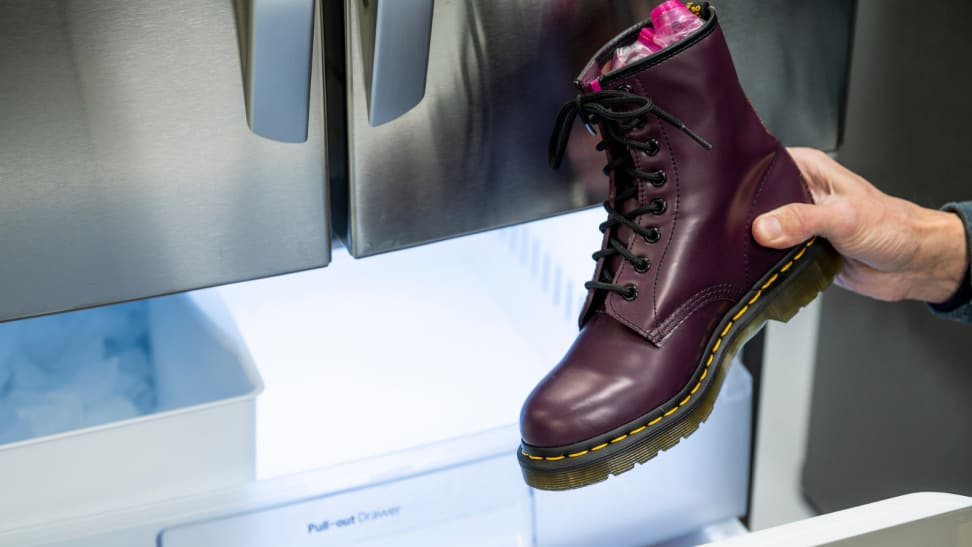 Credit:
Reviewed / Betsey Goldwasser
Credit:
Reviewed / Betsey Goldwasser
Products are chosen independently by our editors. Purchases made through our links may earn us a commission.
Doc Martens 1460 Smooth Leather boots are a classic, but they’re notoriously hard to break in. I had firsthand experience with this during a weekend trip to New York, which ended in painful, oozing blisters all over my heels and feet. The rigid shaft rubbed against my heels and ankles, making every step excruciating. Ever since, I’ve leaned toward wearing softer leather Docs, like the 1460 Pascal Virginia Boots.
The Internet holds many theories on how to quickly break in Docs’ smooth leather boots, including one from Dr. Martens itself, which recommends purchasing their socks, balm, and heel pads. One leather-softening shortcut recommendation that does not involve purchasing more from the brand suggests freezing the boots, which purportedly expands and stretches them.
But which leather break-in method is the quickest? And is it actually worth investing money in Dr. Martens’ Wonder Balsam to soften its own boots? Curious to answer these questions, I decided to put the official Dr. Martens softening method to the test against the at-home freezing treatment to see if either of these claims hold weight.
Breaking in a pair of Dr. Martens, according to the brand’s method
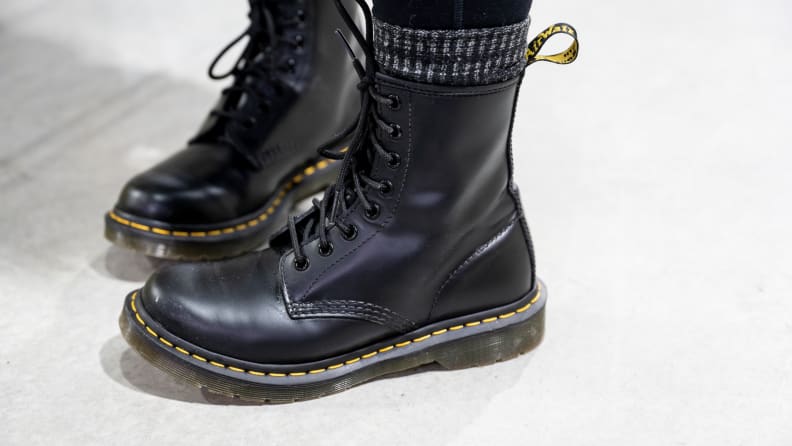
OG Doc Martens are notoriously difficult to break in.
To break in your boots, Dr. Martens recommends purchasing its socks, heel pads, and balm to hasten the process. The balm is supposed to soften the leather and help them break in quicker, while the heel pads and socks will prevent blisters. The company also recommends using aluminum soda cans to stretch the uppers in place of your ankles and feet.
With a brand new personal pair of 1460s, I applied the company-recommended method to see if it works and how long it will take, keeping a boot diary along to log the breaking-in process. On the first day of wear, I tried the boots on for 10 minutes and they were so stiff that I could barely walk in them. So, I gave them a coating of Docs’ Wonder Balsam and let them soak for two days to help soften the leather, and stretched the toebox out with soda cans.
Two days later, they still weren’t wearable, so I applied another coat and let them sit for an additional two days, soda cans still in place. On day six, I took a short walk in the boots while wearing a pair of socks recommended by Dr. Martens, the Marl Socks. While the boots didn’t give my heels blisters, they were still tight across the bridge of my foot, and the socks were loose and slipped around. I wore my own Dickies boot socks for the remainder of testing.
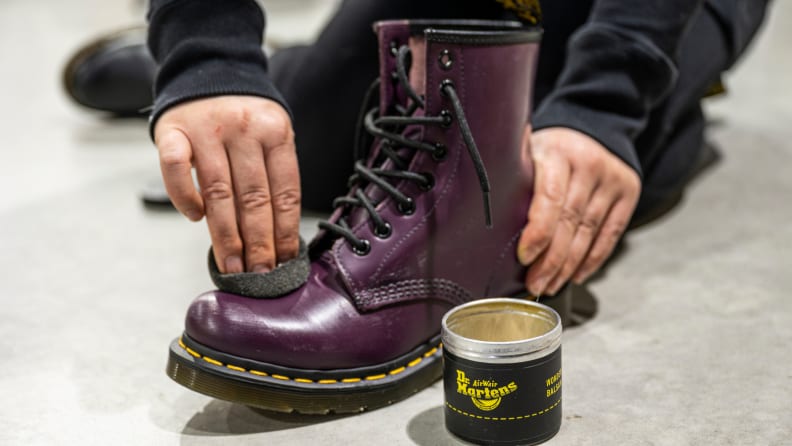
While it took half a can, the Wonder Balsam certainly softened the leather.
Because the shoes were still uncomfortable to walk in after two days, I decided to put more Wonder Balsam on the boots and let it soak for another two days, soda cans still in place. While Dr. Martens doesn’t indicate how many times you’ll need to use the Wonder Balsam, I had to use it five times total (about half of the jar) to break my Docs in. Another short walk later, the leather was slightly softer but the boots still pinched, so I decided to put an even thicker coat on and let them sit for two weeks with the cans in place.
After two weeks, the thick coat of Balsam still wasn't completely absorbed, so I improvised based on other articles I’d seen online and ran a hair dryer over them so that the leather rub would sink into the boots. As it melted and the leather began to soften from the heat, I rubbed it in and removed the soda cans. After a month of trying, that seemed to do the trick. I put them on and went for a longer walk than usual—the boots no longer felt tight on the sides of my feet and the shaft felt much softer.
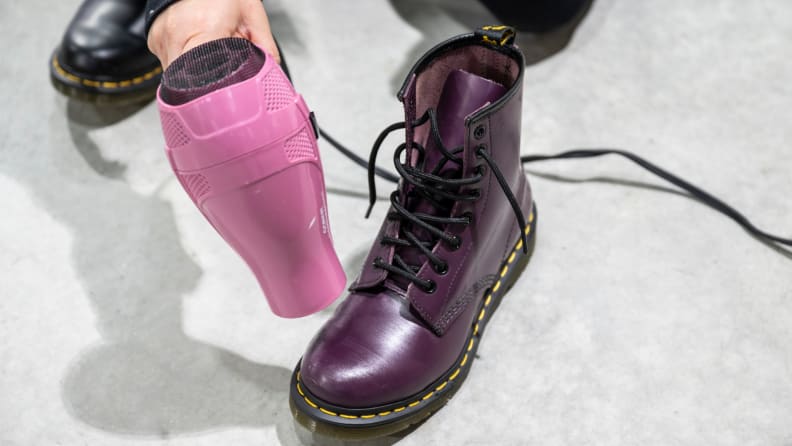
I improvised with a hairdryer to soak in the leather softener.
Through testing, I learned that the indication Dr. Martens have started to break in is when the shaft starts to wrinkle and the boots no longer pinch or give heel. You should still wear boot socks with them—perhaps indefinitely—but take note that despite all of the Balsam I used, my left boot still pinched my toes when I went out dancing in them. Sure, Docs’ method works, but it’s time-consuming and it will still take regular wear to fully break them in. In total, it took about a month and over half a jar of Wonder Balsam to get them comfortable enough to walk in.
Breaking in a pair of Dr. Martens by freezing them
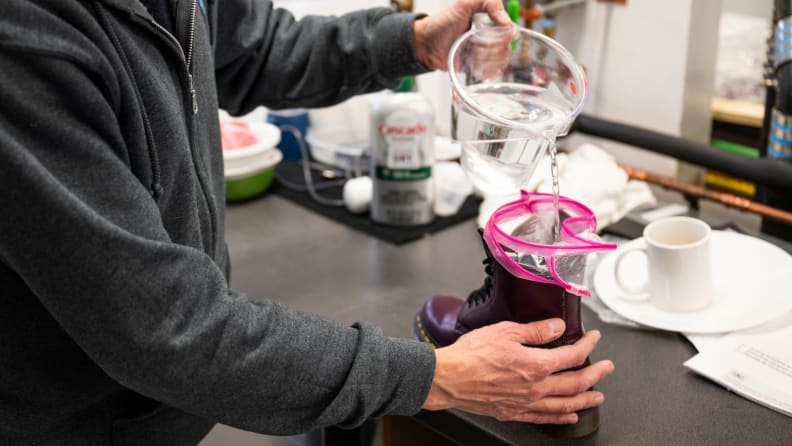
We were pleasantly surprised by the freezing results.
If buying branded leather balm isn't for you, the at-home boot freezing method is the frugal way to go. Because water expands by about 9% by volume, the theory is that if you fill a boot with water and freeze it, it should help stretch and expand the boots' leather. Intrigued by this thesis, I teamed up with Reviewed Senior Scientist Dave Ellerby to put it to the test. Despite both of us being skeptical about the science behind it, the results were surprising.
To avoid ending up with an icy and soaked boot, we double-lined it with Ziplock bags to prevent leaks. The boot was completely filled with bagged water and laced tightly so that we could get the best possible stretch. “The expansion seemed likely to follow the low resistance path out of the boot,” Ellerby says. "Also, a volume increase of 9% seems high, but that means it only expands by about 2% in any given direction.”
Even with these efforts, the ice didn’t fill and stretch the toe area. To make sure the toe got some ice pressure, we tried a second time with a small Ziploc of water pushed as far as possible into the toe, and the rest of the boot packed tightly with a towel. This forced the ice to stay closer to the toe.
When I tried on the boots in the lab post-freeze, I was shocked. The leather was softer and the boots felt stretched out. It is a much quicker and cheaper method than what Dr. Martens recommended, and the results were basically the same. However, similar to the Dr. Martens method, they still require regular wear to break in completely.
What’s faster: Docs’ method or freezing?
The conclusion? No shortcuts exist to completely break in a pair of original Doc Martens. You can hasten the process with either of these two methods, but ultimately, it still takes regular wear to get them to peak comfort. While I am still diligently working on my pair, the company-recommended method helped a great deal with making them wearable. Even if it's more time-consuming, using the balsam left the leather with a glossy finish that freezing can't compete with, and the boot shaft came out slightly softer. When it comes to softening Docs, I prefer the kind of control I can get with its Wonder Balsam over a quick freeze.
Get Dr. Martens 1460 Smooth Leather Lace-Up Boots at Dr. Martens for $150.00
